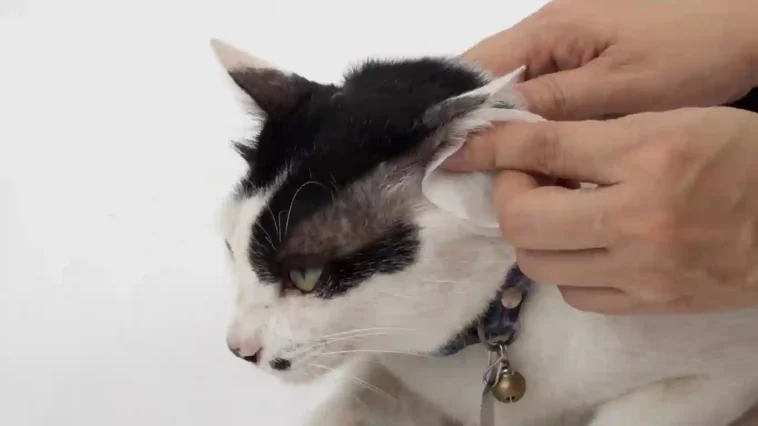One minute, your cat is napping peacefully, and the next, you notice a scratch, a bite, or a patch of fur out of place. You lean in closer and see it—a wound. Maybe it’s from a scuffle with another cat, a rough play session, or an adventure gone wrong. Whatever the cause, your heart sinks.
So what do you do next? How do you clean a cat wound safely—especially if you’re at home and the vet isn’t immediately available?
This guide walks you through it step by step—gently, calmly, and with your cat’s comfort at heart.

First, Stay Calm (Even If You’re Worried)
Your cat feeds off your energy. If you panic, they’ll panic, too. Take a breath. Assess the wound before doing anything else.
- Is there a lot of blood?
- Is your cat limping or acting weak?
- Can you touch the area without them reacting aggressively?
If there’s heavy bleeding, swelling, or signs of pain or infection, it’s best to head to the vet. But if it’s a minor cut or scratch? You can treat it at home.
How to Clean a Cat Wound at Home (Safely and Gently)
You don’t need fancy tools—just clean hands, calm energy, and simple supplies.
What You’ll Need:
- Warm water
- Sterile saline solution or diluted antiseptic (like betadine)
- Cotton balls or soft gauze
- A clean towel
- Treats (because rewards make everything better)
Step-by-Step Instructions:
- Secure Your Cat Gently
- If your cat is calm, place them on a towel or soft surface. If they’re nervous, wrap them loosely in a towel with just the wounded area exposed.
- Trim fur Around the Wound (if needed)
- If there’s long hair covering the area, use blunt scissors to trim it carefully. This keeps the wound clean and visible.
- Clean the Area
- Use sterile saline or warm water to rinse the wound gently. Soak a cotton pad and dab the area—don’t scrub. If you’re wondering how to clean a cat wound at home, this is the most important part: be gentle and don’t use alcohol or hydrogen peroxide. They sting and can damage healthy tissue.
- Apply Antiseptic (Optional)
- You can use a diluted antiseptic like povidone-iodine (it should look like weak tea). Apply with a soft cloth or gauze, then pat dry.
- Let It Breathe
- Don’t bandage unless your vet advises it. Most cat wounds heal better when exposed to air.
How to Tell If a Cat Wound Is Infected
Infections can happen even with the best care—especially if the wound came from a bite. Here’s what to watch for:
- Swelling or redness that spreads
- Yellow or green discharge
- Foul odor
- Warm skin around the area
- Fever or lethargy
- Loss of appetite
If you notice any of these signs, don’t wait. Call your vet. Infections can spread fast, especially in cats.
Monitor the Wound Daily
Keep an eye on the wound once or twice a day. Take note of any changes—good or bad.
- Is it drying out and scabbing over? Great.
- Is the skin getting redder or swollen? That’s a concern.
- Is your cat licking it constantly? Try a cone or soft recovery collar.
Remember, your goal is to prevent infection and let the body heal naturally. If something doesn’t feel right, trust your gut.
When to Go to the Vet (Don’t Wait Too Long)
While minor surface wounds can be cleaned at home, others need professional care. Get your cat checked if:
- The wound is deep or large
- An animal bite caused it
- It keeps reopening or bleeding
- There’s any sign of infection
- Your cat seems sick or in pain
A vet might prescribe antibiotics or even need to drain an abscess. Better to catch it early than deal with a bigger problem later.
Keeping Your Cat Comfortable During Healing
Cats are independent, but they still need a little TLC. Here’s how to help them through recovery:
- Keep their space quiet and stress-free
- Monitor other pets who may lick or disturb the wound
- Offer soft food if they’re not eating much
- Give extra cuddles—on their terms
And while you’re at it, it’s a great time to check their whole body. Any signs of fleas, scratches, or skin issues? Try a homemade flea spray for cats (safe and diluted) to protect their bedding and environment.
Bonus Tip: Preventing Future Wounds
If your cat goes outside, scuffles can be common. Here are a few ways to reduce the risk:
- Spay or neuter your cat (lowers aggression)
- Keep them indoors or supervised outside
- Use calming diffusers if they fight with other household cats
- Regularly trim claws to reduce scratching injuries
Also, clean, calm, and flea-free cats tend to be less itchy and less prone to self-inflicted wounds.
FAQs
Can I use hydrogen peroxide on a cat wound?
No. It damages tissue and stings. Use saline or diluted betadine instead.
How often should I clean a cat’s wound?
Once or twice daily is usually enough. Overcleaning can slow healing.
What if my cat won’t let me clean the wound?
Try wrapping them gently in a towel. If they’re still too stressed, call your vet. Sedation might be needed for proper care.
Can I use human antibiotic ointment?
Not without asking your vet. Some ingredients are unsafe if your cat licks the area.
How long do cat wounds take to heal?
Minor cuts may heal in 5–7 days. Deeper wounds or bite abscesses can take up to two weeks or more.
A Little Care Goes a Long Way
Seeing a wound on your cat is scary, but feeling nervous is okay. But with gentle hands and close observation, you can help them heal quickly and safely.
They might not understand why you’re dabbing at their paw or checking their belly, but deep down, they know you’re trying to help.
So take it slow, speak softly, and keep those treats nearby. Because healing isn’t just about medicine—it’s about comfort, trust, and being there.
And if you ever feel unsure? That’s okay, too. You’re doing your best. And to your cat, that means everything.








GIPHY App Key not set. Please check settings